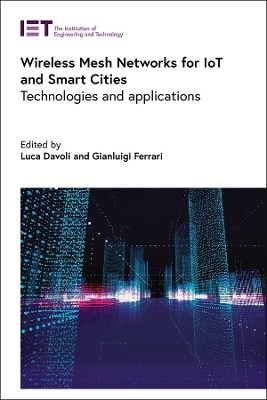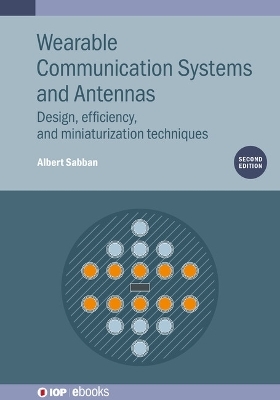
Wireless Mesh Networks for IoT and Smart Cities
Institution of Engineering and Technology (Verlag)
978-1-83953-282-5 (ISBN)
Wireless mesh networks (WMNs) are wireless communication networks organized in a mesh topology with radio capabilities. These networks can self-form and self-heal and are not restricted to a specific technology or communication protocol. They provide flexible yet reliable connectivity that cellular networks cannot deliver. Thanks to technological advances in machine learning, software defined radio, UAV/UGV, big data, IoT and smart cities, wireless mesh networks have found much renewed interest for communication network applications.
This edited book covers state of the art research innovations and future directions in this field. WMNs offer attractive communication solutions in difficult environments such as emergency situations, battlefield surveillance, field operations, disaster recovery, tunnels, oil rigs, high-speed mobile-video applications on board transport, VoIP, and self-organizing internet access for communities. The main topics covered include BLL-based mesh networks, body sensor networks, seamless IoT mobile sensing through Wi-Fi mesh networking, software defined radio for wireless mesh networks, UAV-to-ground multi-hop communication using backpressure and FlashLinQ-based algorithms, unmanned aerial vehicle relay networks, multimedia content delivery in wireless mesh networking, adaptive fuzzy agents in big data and multi-sensor environments and AI-aided resource sharing for WMNs.
This is a useful reference for ICT networking engineers, researchers, scientists, engineers, advanced students and lecturers in both academia and industry working on wireless communications and WMNs. It is also relevant to developers, designers and manufacturers of WMNs and wireless sensor networks (WSNs); and scientists and engineers working on applications of WNNs and WSNs.
Luca Davoli is a fixed-term assistant professor at the University of Parma, Italy. Since January 2014, he has been a member of the Internet of Things (IoT) Laboratory (https://iotlab.unipr.it) at the Department of Engineering and Architecture of the University of Parma, Italy. His main research interests include Internet of Things, software defined networking, big stream and peer-to-peer networks. He is an IEEE and a GTTI member. He received his PhD in information technologies from the Department of Information Engineering of the same university with a thesis entitled "Architecture and Technologies for the Internet of Things". Gianluigi Ferrari is an associate professor of telecommunications at the University of Parma, Italy. Since September 2006 he has been the Coordinator of the Internet of Things (IoT) Laboratory (http://iotlab.unipr.it/) and, since 2016, the co-founder, president and CEO of things2i s.r.l. (http://www.things2i.com/), a spin-off company of the University of Parma dedicated to IoT and smart systems. His research activities revolve around signal processing, communication/networking, and IoT. He has published extensively in these areas and coordinated several technical projects, including EU-funded competitive projects. He is a senior member of the IEEE. He received his PhD in information technologies from the University of Parma, Italy.
Chapter 1: Wireless mesh network emulation
Chapter 2: A sink-oriented routing protocol for blue light link-based mesh network
Chapter 3: Body sensor networks - recent advances and challenges
Chapter 4: Seamless IoT mobile sensing through Wi-Fi mesh networking
Chapter 5: Software-defined radio for wireless mesh networks
Chapter 6: Backpressure and FlashLinQ-based algorithms for multi-hop flying ad-hoc networks
Chapter 7: Unmanned aerial vehicle relay networks
Chapter 8: Multimedia content delivery in wireless mesh networking
Chapter 9: Toward intelligent extraction of relevant information by adaptive fuzzy agents in big data and multi-sensor environments
Chapter 10: Artificial intelligence-aided resource sharing for wireless mesh networks
Chapter 11: Boosting machine learning mechanisms in wireless mesh networks through quantum computing
Chapter 12: Game theoretical-based task allocation in malicious cognitive Internet of Things
Chapter 13: Conclusions and future perspectives
| Erscheinungsdatum | 17.08.2022 |
|---|---|
| Reihe/Serie | Telecommunications |
| Verlagsort | Stevenage |
| Sprache | englisch |
| Maße | 156 x 234 mm |
| Themenwelt | Technik ► Nachrichtentechnik |
| ISBN-10 | 1-83953-282-3 / 1839532823 |
| ISBN-13 | 978-1-83953-282-5 / 9781839532825 |
| Zustand | Neuware |
| Haben Sie eine Frage zum Produkt? |
aus dem Bereich


